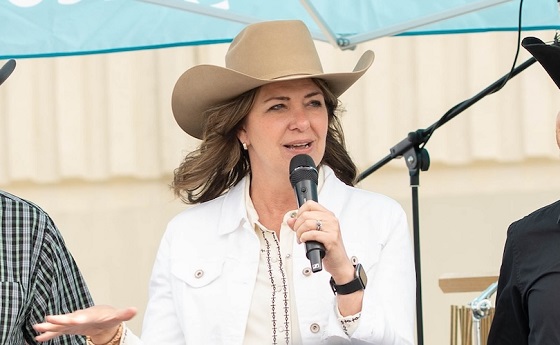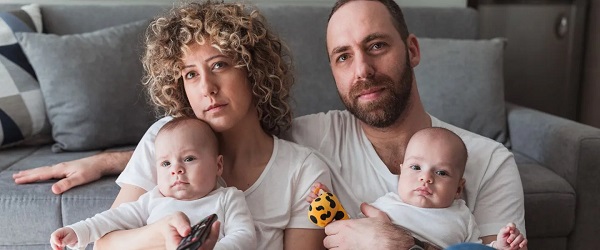Alberta
Central Alberta Child Advocacy Centre thrilled with Provincial Funding announcement

Mark Jones of the Central Alberta Child Advocacy Centre comments on the Province’s financial commitment to children
From the Province of Alberta
New funding model for child advocacy centres
The Government of Alberta is introducing a consistent and equitable funding model to help vulnerable children across the province get the help they need.
Child advocacy centres provide a safe place for children and youth who have experienced abuse. The centres allow clients to tell their stories and access support throughout the entire process of disclosure, investigation, the judicial phase and healing journey.
The centres bring together multi-disciplinary teams to provide a coordinated and child-friendly approach that minimizes trauma, supports healing, and increases the likelihood of offender conviction.
A new funding allocation model will replace the previous system of annual grants, which created uncertainty and inconsistency between centres. A three-year funding cycle will ensure an equitable and sustainable approach, emphasizing government’s continued commitment to supporting the most vulnerable Albertans.
“Child Advocacy Centres show the power of public, private and not-for profit organizations working with caring citizens to support children and families affected by abuse. This new funding model will ensure fairness across the province and give families certainty in accessing the supports they need.”
“We are grateful for the support of the Government of Alberta. Child Advocacy Centres are the result of a strong community response working to end child abuse through collaboration of services and resources. This funding allows us to continue to help children and youth who have experienced abuse efficiently access the services and supports they need, under one roof.”
“This long-term funding model allows us to plan for the future of our centre in a thoughtful way. While we are disappointed to receive less funding than before, we understand the need to ensure equity across the province and we will look to take a leadership role in collecting data and information to inform government decision-making over the next few years.”
Government will provide $3.4 million per year for 2020-23 to support child advocacy centres in Edmonton, Calgary, Grande Prairie, Red Deer, Lloydminster and Fort McMurray. Funding has been set aside for centres in Medicine Hat and Lethbridge, should they become operational.
| 2019 | 2022-23 | |
|---|---|---|
| Zebra Child Protection Centre (Edmonton) | $712,000 | $1,037,050 |
| Calgary and Area Child Advocacy Centre | $1,979,000 | $1,306,850 |
| Caribou Centre Child Advocacy Centre (Grande Prairie) | $150,000 | $202,350 |
| Central Alberta Child Advocacy Centre (Red Deer) | $150,000 | $303,530 |
| The Little Bear Child and Youth Advocacy Centre (Lloydminster) | $115,530 | $126,470 |
| Care Centre for Children and Youth (Fort McMurray) | $133,000 | $160,200 |
Total funding amounts will not change, but will be distributed based on the new model, which takes into account previous base funding, the volume of clients served, and the intensity of need based on a community’s child intervention caseload. The three-year grants will also include data collection obligations, allowing for funding based on consistent metrics across the province. The funding allocation model does not affect co-located government staff from Children’s Services and Alberta Health Services.
New funding model reduces red tape
Because grants will no longer have to be renewed each year, the new funding model will reduce the administrative burden on centres and government staff. This is part of government’s ongoing commitment to reducing red tape and making processes more efficient.
Quick facts
- In 2008, there were 14,403 substantiated cases of child abuse in Alberta.
- 36 per cent of adults in Alberta have experienced some form of abuse in their youth.
- Alberta’s Child, Youth and Family Enhancement Act requires anyone who believes a child is at risk to report their concern.
- Albertans should know the signs of abuse and neglect, and report any concerns to the Child Abuse Hotline at 1-800-387-KIDS (available in multiple languages, 24 hours a day), or contact a local Children’s Services office, Delegated First Nations Agency, or law enforcement.
- The funding in each centre will be directed towards multidisciplinary triage, forensic interviews, victim advocacy, court preparation, and service coordination (medical and mental health referrals).
Alberta
Danielle Smith slams Skate Canada for stopping events in Alberta over ban on men in women’s sports

From LifeSiteNews
The Alberta premier has denounced Skate Canada as ‘disgraceful’ for refusing to host events in the province because of a ban on ‘transgender’ men in women’s sports.
Alberta Premier Danielle Smith has demanded an apology after Skate Canada refused to continue holding events in Alberta.
In a December 16 post on X, Smith denounced Skate Canada’s recent decision to stop holding competitions in Alberta due to a provincial law keeping gender-confused men from competing in women’s sports.
“Women and girls have the right to play competitive sports in a safe and fair environment against other biological females,” Smith declared. “This view is held by a vast majority of Albertans and Canadians. It is also common sense and common decency.”
Women and girls have the right to play competitive sports in a safe and fair environment against other biological females.
This view is held by a vast majority of Albertans and Canadians. It is also common sense and common decency.
Skate Canada‘s refusal to hold events in… pic.twitter.com/n4vbkTx6B0
— Danielle Smith (@ABDanielleSmith) December 16, 2025
“Skate Canada‘s refusal to hold events in Alberta because we choose to protect women and girls in sport is disgraceful,” she declared.
“We expect they will apologize and adjust their policies once they realize they are not only compromising the fairness and safety of their athletes, but are also offside with the international community, including the International Olympic Committee, which is moving in the same direction as Alberta,” Smith continued.
Earlier this week, Skate Canada announced their decision in a statement to CBC News, saying, “Following a careful assessment of Alberta’s Fairness and Safety in Sport Act, Skate Canada has determined that we are unable to host events in the province while maintaining our national standards for safe and inclusive sport.”
Under Alberta’s Fairness and Safety in Sport Act, passed last December, biological men who claim to be women are prevented from competing in women’s sports.
Notably, Skate Canada’s statement failed to address safety and fairness concerns for women who are forced to compete against stronger, and sometimes violent, male competitors who claim to be women.
Under their 2023 policy, Skate Canada states “skaters in domestic events sanctioned by Skate Canada who identify as trans are able to participate in the gender category in which they identify.”
While Skate Canada maintains that gender-confused men should compete against women, the International Olympic Committee is reportedly moving to ban gender-confused men from women’s Olympic sports.
The move comes after studies have repeatedly revealed what almost everyone already knew was true, namely that males have a considerable innate advantage over women in athletics.
Indeed, a recent study published in Sports Medicine found that a year of “transgender” hormone drugs results in “very modest changes” in the inherent strength advantages of men.
Additionally, male athletes competing in women’s sports are known to be violent, especially toward female athletes who oppose their dominance in women’s sports.
Last August, Albertan male powerlifter “Anne” Andres was suspended for six months after a slew of death threats and harassments against his female competitors.
In February, Andres ranted about why men should be able to compete in women’s competitions, calling for “the Ontario lifter” who opposes this, apparently referring to powerlifter April Hutchinson, to “die painfully.”
Interestingly, while Andres was suspended for six months for issuing death threats, Hutchinson was suspended for two years after publicly condemning him for stealing victories from women and then mocking his female competitors on social media. Her suspension was later reduced to a year.
Alberta
Alberta’s huge oil sands reserves dwarf U.S. shale

From the Canadian Energy Centre
By Will Gibson
Oil sands could maintain current production rates for more than 140 years
Investor interest in Canadian oil producers, primarily in the Alberta oil sands, has picked up, and not only because of expanded export capacity from the Trans Mountain pipeline.
Enverus Intelligence Research says the real draw — and a major factor behind oil sands equities outperforming U.S. peers by about 40 per cent since January 2024 — is the resource Trans Mountain helps unlock.
Alberta’s oil sands contain 167 billion barrels of reserves, nearly four times the volume in the United States.
Today’s oil sands operators hold more than twice the available high-quality resources compared to U.S. shale producers, Enverus reports.
“It’s a huge number — 167 billion barrels — when Alberta only produces about three million barrels a day right now,” said Mike Verney, executive vice-president at McDaniel & Associates, which earlier this year updated the province’s oil and gas reserves on behalf of the Alberta Energy Regulator.
Already fourth in the world, the assessment found Alberta’s oil reserves increased by seven billion barrels.
Verney said the rise in reserves despite record production is in part a result of improved processes and technology.
“Oil sands companies can produce for decades at the same economic threshold as they do today. That’s a great place to be,” said Michael Berger, a senior analyst with Enverus.
BMO Capital Markets estimates that Alberta’s oil sands reserves could maintain current production rates for more than 140 years.
The long-term picture looks different south of the border.
The U.S. Energy Information Administration projects that American production will peak before 2030 and enter a long period of decline.
Having a lasting stable source of supply is important as world oil demand is expected to remain strong for decades to come.
This is particularly true in Asia, the target market for oil exports off Canada’s West Coast.
The International Energy Agency (IEA) projects oil demand in the Asia-Pacific region will go from 35 million barrels per day in 2024 to 41 million barrels per day in 2050.
The growing appeal of Alberta oil in Asian markets shows up not only in expanded Trans Mountain shipments, but also in Canadian crude being “re-exported” from U.S. Gulf Coast terminals.
According to RBN Energy, Asian buyers – primarily in China – are now the main non-U.S. buyers from Trans Mountain, while India dominates purchases of re-exports from the U.S. Gulf Coast. .
BMO said the oil sands offers advantages both in steady supply and lower overall environmental impacts.
“Not only is the resulting stability ideally suited to backfill anticipated declines in world oil supply, but the long-term physical footprint may also be meaningfully lower given large-scale concentrated emissions, high water recycling rates and low well declines,” BMO analysts said.
-

 Community2 days ago
Community2 days agoCharitable giving on the decline in Canada
-

 Business2 days ago
Business2 days agoCanada’s recent economic growth performance has been awful
-

 Alberta2 days ago
Alberta2 days agoCanada’s New Green Deal
-

 armed forces2 days ago
armed forces2 days agoOttawa’s Newly Released Defence Plan Crosses a Dangerous Line
-

 Alberta1 day ago
Alberta1 day agoAlberta’s huge oil sands reserves dwarf U.S. shale
-

 Health1 day ago
Health1 day agoSaskatchewan woman approved for euthanasia urged to seek medical help in Canada rather than US
-

 Business2 days ago
Business2 days agoCOP30 finally admits what resource workers already knew: prosperity and lower emissions must go hand in hand
-

 Indigenous1 day ago
Indigenous1 day agoResidential school burials controversy continues to fuel wave of church arsons, new data suggests






